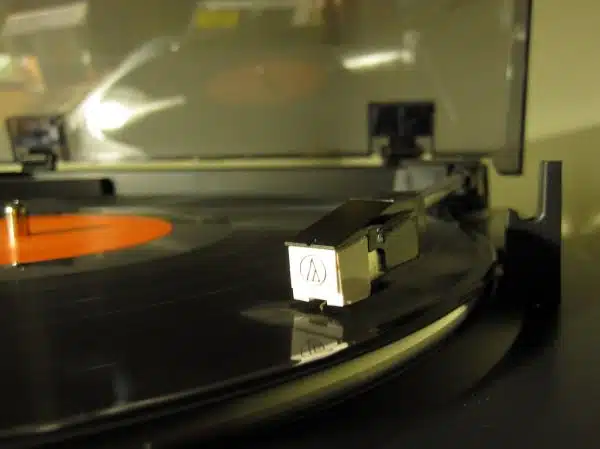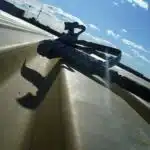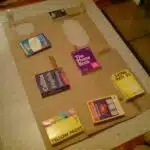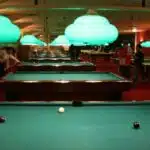Vinyl shutters have become increasingly popular among homeowners due to their low maintenance and durability. However, over time, the color of vinyl shutters can fade or become outdated, leaving homeowners with the need to update their exterior decor. Painting vinyl shutters is a cost-effective solution that can instantly transform the look of a home’s exterior. In this article, we will provide step-by-step instructions on how to effectively paint vinyl shutters for a professional and long-lasting finish.
Before beginning the painting process, it is important to properly prepare the surface of the vinyl shutters to ensure that the paint adheres correctly. This involves cleaning and priming the surface, as well as selecting a high-quality paint that is designed specifically for use on vinyl materials. Additionally, there are several techniques and tools that can be used to achieve a flawless finish when painting vinyl shutters, which we will discuss in detail throughout this article. By following these tips and techniques, homeowners can easily update the look of their home’s exterior while also increasing its value and curb appeal.
Benefits Of Painting Vinyl Shutters
Vinyl shutters are an excellent addition to any home exterior. They offer a classic look that is often associated with traditional homes, but they can also provide a modern twist to more contemporary designs. However, over time, the original color of vinyl shutters may fade or become damaged due to exposure to harsh weather conditions. This is where painting comes in as an option for homeowners who want to restore their shutters’ original beauty while benefiting from a cost-effective solution.
One of the benefits of painting vinyl shutters is that it enhances their durability and lifespan. By applying a fresh coat of paint, you are protecting the material from further damage and providing an extra layer of protection against weather elements such as rain, wind, and sun exposure. Moreover, painting your vinyl shutters can give them a new lease on life by updating their look without having to replace them entirely. This way, you can save money while still giving your home’s exterior a facelift.
Another advantage of painting vinyl shutters is its cost-effectiveness compared to other types of shutter materials. Vinyl is already affordable when it comes to purchasing new ones, but repainting them instead of replacing them entirely saves even more money in the long run. In addition, choosing the right type of paint for your vinyl shutter can help prolong their lifespan before requiring another paint job. Overall, painting your vinyl shutters provides many benefits that make it a worthwhile investment for homeowners looking to enhance their home’s exterior appeal without breaking the bank.
Transitioning into the next section about choosing the right paint for vinyl shutters requires careful consideration since not all paints are suitable for this purpose. Therefore, selecting high-quality paint with specific properties is crucial in achieving optimal results when repainting your vinyl shutters.
Choosing The Right Paint For Vinyl Shutters
When it comes to painting vinyl shutters, selecting the right paint is crucial. The type of paint finish you choose will have a significant impact on the durability and longevity of the paint job. A high-quality exterior acrylic latex paint with a satin or semi-gloss finish is an excellent option for painting vinyl shutters.
Choosing the right paint finish is important because it affects the overall look and performance of your vinyl shutters. Satin or semi-gloss finishes are ideal for outdoor applications because they are easy to clean, resist fading and cracking, and provide good coverage. A glossier finish may be prone to showing imperfections in the surface, while a flat or matte finish may not hold up well against moisture and UV rays.
When it comes to selecting a durable paint for vinyl shutters, there are several options available. Some popular choices include Sherwin-Williams Duration Exterior Acrylic Latex Paint, Behr Premium Plus Ultra Exterior Paint & Primer in One, and Benjamin Moore Aura Exterior Paint. These paints offer superior adhesion, excellent coverage, and long-lasting protection against weathering and fading.
Moving forward into cleaning the surface of vinyl shutters, keeping them clean is essential to maintaining their appearance and longevity.
Cleaning The Surface Of Vinyl Shutters
The first step to achieving a perfect paint job on your vinyl shutters is to ensure that the surface is clean and free of dirt, grime or any other contaminants. Think of it as preparing a canvas for a masterpiece painting. Vinyl shutter maintenance should be done regularly to prevent any accumulation of dirt or stains that could become stubborn over time. Cleaning the surface with water and soap solution, followed by a thorough rinse with water, can help remove most contaminants and keep your vinyl shutters looking new for years.
However, removing stubborn stains requires more than just soap and water. For instance, mildew or mold stains may require an application of bleach solution before rinsing thoroughly with water. Grease stains may need dishwashing liquid mixed with warm water to dissolve the grease, followed by a rinse with clean water. For paint overspray, you can use rubbing alcohol or acetone to remove the paint without damaging the vinyl shutter’s finish.
It’s important to note that even after cleaning, some stains may still remain. In such cases, sanding and priming vinyl shutters may be necessary before painting. In the next section, we’ll discuss how to prepare your vinyl shutters for painting by sanding and priming them properly.
Sanding And Priming Vinyl Shutters
Before painting vinyl shutters, it is crucial to prepare the surface properly. One of the essential steps in this process is sanding. Sanding helps create a better adhesion surface for the primer and paint, which results in a longer-lasting finish. Start by cleaning the shutters with soap and water to remove any dirt or grime. Once dry, use a fine-grit sandpaper (220-240 grit) to lightly sand the surface of the shutters. Avoid using coarse-grit sandpaper as it can damage the vinyl’s surface.
After sanding, it is necessary to prime the shutters before painting them. Priming provides several benefits, including improved adhesion, durability, and overall finish quality. Choose a high-quality primer that is compatible with vinyl surfaces and apply it using a brush or spray gun evenly. Allow sufficient drying time as per manufacturer’s instructions before applying paint on top of the primer coat.
While priming vinyl shutters may seem like an unnecessary step, skipping it can lead to several issues down the line. Common mistakes include not allowing enough drying time between coats, using cheap or incompatible primers/paints, and not applying an even coat of primer throughout all surfaces. By following these tips and techniques correctly, you can achieve a professional-looking finish that will last for years to come. In the next section, we will discuss how to prepare your work area before starting any painting project on vinyl shutters.
Preparing The Work Area
Before painting your vinyl shutters, it’s important to prepare the work area properly. This will help ensure that you get the best possible results and avoid any accidents or damage to nearby items. The first step in preparing the work area is to clear away any obstacles that could get in your way while you’re painting. This might include furniture, plants, or other outdoor decorations.
Once you’ve cleared away any obstacles, it’s time to cover nearby items. This will protect them from any paint overspray or drips that may occur during the painting process. You can use plastic drop cloths or old sheets to cover larger items like furniture or outdoor fixtures. For smaller items like potted plants or garden statues, you may want to use a piece of cardboard or a paper bag.
By taking the time to properly prepare your work area, you’ll be able to focus on painting your vinyl shutters without worrying about damaging anything else in the process. In the next section, we’ll discuss how to protect surrounding surfaces from paint splatters and spills so that you can achieve a professional-looking finish on your shutters.
Protecting Surrounding Surfaces
To ensure a successful paint job on your vinyl shutters, it’s important to protect the surrounding surfaces from overspray. This includes covering any furniture or plants that may be nearby. It’s best to move these items away from the work area entirely if possible. If not, use drop cloths or plastic sheeting to completely cover them.
When applying paint to vinyl shutters, it’s important to control overspray as much as possible. Overspray occurs when paint mist travels beyond the intended surface and can land on nearby objects or even people. To prevent this, use a spray shield or cardboard cutout around the shutter while spraying. Additionally, make sure to use a steady hand and apply the paint in light coats.
By taking these precautions and controlling overspray, you can avoid damaging surrounding surfaces and keep your work area clean. Next, we’ll discuss selecting the right tools for painting vinyl shutters to ensure a professional finish.
Selecting The Right Tools For Painting Vinyl Shutters
Choosing the right tools for painting vinyl shutters is crucial to achieving a professional-looking finish. One of the most important tools you’ll need is a high-quality brush. Choosing appropriate brushes is essential because it will help you achieve even coverage and reduce the number of coats needed to achieve your desired look. Look for brushes with synthetic bristles, as natural bristles can absorb water and cause streaking.
Another tool you may want to consider using is a paint sprayer. Using a paint sprayer can save you time and effort, especially if you have a large number of shutters to paint. It can also provide a smoother finish than using a brush alone. If you decide to use a paint sprayer, be sure to follow the manufacturer’s instructions carefully and wear protective gear, such as goggles and a respirator mask.
When selecting your tools, keep in mind that different surfaces require different techniques and tools. For instance, if your vinyl shutters have raised panels or grooves, choose a narrow brush that will fit into these areas without causing drips or smudges. Additionally, if you’re painting several shutters at once, consider using an angled brush for faster coverage.
- A high-quality brush can make all the difference in achieving an even finish.
- Using a paint sprayer can save time and effort while providing a smoother finish.
- Different surfaces require different techniques and tools.
- Investing in quality tools upfront will save time and money in the long run.
Now that you’ve selected the right tools for painting vinyl shutters, it’s time to move on to applying the first coat of paint.
Applying The First Coat Of Paint
Applying the First Coat of Paint:
Now that you have prepared your vinyl shutters for painting, it is time to start applying the first coat of paint. There are several tips and techniques that you should keep in mind to ensure that your shutters look their best.
Firstly, make sure to use a high-quality paintbrush or roller designed for use on vinyl. This will help to ensure an even distribution of paint and prevent streaks or bubbles from forming. Additionally, be sure to apply the paint in thin, even coats, rather than trying to cover the entire surface with one thick layer. This will help the paint to dry more quickly and evenly.
Another important tip is to work in sections, rather than trying to paint the entire shutter at once. Start at one end and work your way across, making sure that each section is fully covered before moving on to the next. This will help you to avoid accidentally missing spots or leaving areas unevenly painted.
Overall, applying the first coat of paint can be a simple process if you follow these tips and techniques. With a little bit of patience and attention to detail, you can achieve a professional-looking finish on your vinyl shutters.
As you finish applying the first coat of paint, it’s important to allow it time to dry completely before moving on to the next step. In order for the second coat of paint to adhere properly and achieve a smooth finish, it’s recommended that you wait at least 24 hours between coats. During this time, make sure that your shutters are kept in a cool, dry place where they won’t be disturbed. Once they are fully dry, you can move on to applying the second coat of paint for an even more impressive finish.
Allowing The First Coat To Dry
After applying the first coat of paint on your vinyl shutters, it is crucial to allow it to dry properly before proceeding with the next step. Rushing this process can cause the paint to peel or crack, and ruin all your hard work. The drying time for vinyl shutters largely depends on the weather conditions and temperature. Generally, it takes about 24-48 hours for the first coat of paint to dry completely.
To ensure that your vinyl shutters dry evenly and efficiently, here are some tips you can follow:
- Keep them in a well-ventilated area
- Avoid direct sunlight as it may cause uneven drying
- Don’t touch or move them around while they’re still wet
- Use a fan or dehumidifier to speed up the drying process
Once you’re confident that the first coat has dried completely, you can proceed with applying the second coat of paint. This step is equally important as it helps create a smooth and even finish that looks professional and polished. By following these simple steps, you’ll be able to give your vinyl shutters a brand-new look that will last for years to come!
Applying The Second Coat Of Paint
After allowing the first coat to dry completely, it’s time to apply the second coat of paint on your vinyl shutters. Make sure you have enough paint for the job as running out of paint mid-way can result in an uneven finish. Start by inspecting the shutters for any areas that might need touch ups before proceeding.
Apply the second coat of paint using the same technique as before, starting from top to bottom and working your way across each panel. Use long, smooth strokes and avoid going over areas that have already been covered. Allow the paint to dry completely as per manufacturer’s instructions before re-installing the shutters back onto their hinges.
Drying time is crucial when painting vinyl shutters. Rushing through this process can lead to a tacky or sticky finish which may be difficult to fix later on. Once the second coat has been applied, allow it to dry completely for at least 24 hours before handling or reinstalling your vinyl shutters. In our subsequent section, we will discuss achieving a smooth finish with a paint sprayer for those who want an even smoother look on their vinyl shutters.
Achieving A Smooth Finish With A Paint Sprayer
Preparing the shutters for painting with a paint sprayer requires a thorough cleaning to remove any dirt, dust, or debris that may be present on the surface.
To ensure an even and smooth finish, sanding the shutters prior to painting is recommended.
Painting with a paint sprayer should be done in a well-ventilated area, as the fumes created by the paint can be hazardous.
To ensure even coverage, when painting with a paint sprayer, make sure to use a consistent and steady motion when holding the nozzle.
It is important to regularly clean the paint sprayer while painting to prevent clogging of the nozzle.
After use, the paint sprayer should be disassembled, washed, and dried according to the manufacturer’s directions in order to ensure its optimal performance.
Preparing The Shutters
In order to achieve a smooth finish when painting vinyl shutters with a paint sprayer, it is crucial to properly prepare the surface. This involves thoroughly cleaning the shutters with appropriate cleaning solutions and allowing them to dry completely before proceeding with any sanding or painting. It is important to note that not all cleaning solutions are suitable for use on vinyl, so it is essential to choose a product that is safe and effective for this material.
Once the shutters have been cleaned, sanding is necessary to ensure optimal adhesion of the paint. The appropriate sandpaper grits will depend on the condition of the shutters and any existing paint or coatings that may be present. For example, rougher grits such as 80 or 120 can be used for more heavily weathered surfaces, while finer grits such as 220 are ideal for smoother surfaces or those with existing paint. It is important to sand evenly and remove any dust or debris from the surface before applying the primer.
In summary, proper preparation of vinyl shutters is essential in achieving a smooth finish when using a paint sprayer. This involves using appropriate cleaning solutions and allowing ample drying time before proceeding with sanding using suitable grits. By taking these steps, you can ensure optimal adhesion of the paint and achieve a beautiful finish that will last for years to come.
Painting With A Sprayer
Achieving a smooth finish using a paint sprayer is a popular method among professional painters and DIY enthusiasts. It allows for quick and efficient coverage of large surfaces compared to traditional methods like using a brush. However, it also has its drawbacks that must be taken into consideration before deciding whether to use a sprayer or not. One of the main advantages of using a sprayer is that it produces an even finish with minimal brush marks or streaks. On the other hand, it can be messy and requires more preparation time, especially when it comes to masking off surrounding areas.
When painting vinyl shutters with a sprayer, one of the most important tips is to properly mask off any surrounding areas like windows or doors. This will prevent overspray from getting on unwanted surfaces and causing damage or requiring extra cleanup. Additionally, using high-quality materials for masking tape and drop cloths can help ensure that they adhere well and do not shift during spraying.
Another helpful tip when using a paint sprayer is to work in small sections at a time. This will allow you to focus on achieving an even coat without rushing through the process, which can result in uneven coverage or drips. It’s also important to maintain consistent distance between the sprayer nozzle and surface throughout each pass to avoid creating thicker areas that can lead to runs or drips. By following these tips and taking the necessary precautions, you can achieve a smooth finish when painting vinyl shutters with a paint sprayer that will look great for years to come.
Cleaning The Sprayer
Achieving a smooth finish with a paint sprayer is not just about proper masking and technique, but also about proper maintenance. Cleaning the sprayer is an essential part of achieving a flawless finish and extending the life of your equipment. Neglecting to clean the sprayer can lead to clogs, uneven spray patterns, and decreased performance.
The first maintenance tip for cleaning the sprayer is to flush it out after each use. This involves running water or solvent through the sprayer until the liquid runs clear. It’s important to follow manufacturer instructions for specific cleaning solutions and methods as different types of paint require different cleaning agents. Another helpful tip is to disassemble the sprayer and clean each part separately to ensure that all components are free from residue or debris.
Regularly inspecting and replacing worn or damaged parts like seals, filters, and tips can also prevent issues with clogs or inconsistent spray patterns. These simple maintenance tips can go a long way in keeping your sprayer in top condition for years to come while ensuring that you achieve professional-quality finishes every time you use it.
Achieving A Smooth Finish With A Paintbrush
Imagine you have just finished cleaning and sanding your vinyl shutters in preparation for painting. Now, you need to choose the right paintbrush to achieve a smooth finish. The brush you select will determine how the paint adheres to the shutters and how evenly it is applied.
Choosing the right brush involves considering several factors, including bristle type and size. For vinyl shutters, use a synthetic bristle brush as it holds up well against the chemicals in the paint. Additionally, select a brush that is appropriately sized for your project. A small brush may be suitable for touch-ups or narrow areas, while a larger one is better suited for large surfaces.
Once you have chosen the right brush, it’s time to prepare the shutters for painting. Before starting, make sure they are clean and dry to ensure proper adhesion of the paint. Apply painter’s tape around any areas that should not be painted, such as window frames or door handles. Lastly, apply a coat of primer before painting to enhance adhesion and coverage.
As we have seen, choosing the right brush and preparing your vinyl shutters properly are crucial steps in achieving a smooth finish when painting them. With these tips in mind, you are now ready to add decorative touches to your newly painted shutters without worrying about their quality being compromised by an uneven application of paint.
Adding Decorative Touches To Painted Vinyl Shutters
Once you’ve painted your vinyl shutters and they have dried completely, it’s time to add some decorative accents. Decorative accents can be anything from stenciling designs onto the shutters to attaching metal or wooden elements that complement the color of the shutters. When choosing decorative accents, consider the overall aesthetic of your home’s exterior and select elements that will enhance its appeal.
When selecting colors for your vinyl shutters, keep in mind that darker hues tend to fade faster than lighter colors. Additionally, dark colors may absorb more heat from the sun, which could cause warping or other damage over time. If you live in an area with intense sunlight, consider using a lighter color for your shutters to prolong their lifespan. Alternatively, you can use a UV-resistant clear coat on top of your darker paint to protect against fading.
To add even more visual interest to your painted vinyl shutters, consider creating a contrast between the shutter color and the color of your home’s exterior siding. This can be achieved by selecting complementary colors or by choosing shades with different levels of saturation. A professional painter or home improvement expert can help you select the best color choices based on your specific needs and preferences.
As you continue to maintain your painted vinyl shutters, there are several steps you can take to keep them looking their best. Regular cleaning with soap and water is important for removing dirt and grime buildup. You should also check for any damage or wear periodically and touch up any areas that need attention. By following these simple tips, you can extend the life of your painted vinyl shutters and continue enjoying their beauty for years to come.
Maintaining Painted Vinyl Shutters
Adding decorative touches to painted vinyl shutters can give your home that extra bit of curb appeal. However, it’s just as important to maintain the paint job on your shutters to ensure their longevity. In fact, according to a recent study, homes with well-maintained exterior features can increase property values by up to 20%.
To achieve longevity in your painted vinyl shutters, there are several tips you should follow. Firstly, make sure the surface is clean and dry before painting. Any dirt or dust particles left on the surface can cause the paint to peel or bubble over time. Additionally, choose a high-quality exterior paint that is specifically designed for use on vinyl surfaces. This will provide better adhesion and flexibility during changes in temperature.
One common mistake when painting vinyl shutters is applying too much paint at once. It may seem like a time-saver, but thick coats of paint can lead to cracking and peeling over time. Instead, apply several thin coats of paint, allowing sufficient drying time between each coat. This will ensure an even finish that will last for years to come.
Transition: Now that we’ve covered tips for longevity and common mistakes when painting vinyl shutters, let’s move on to some frequently asked questions about this process.
Frequently Asked Questions About Painting Vinyl Shutters
When it comes to painting vinyl shutters, there are a few best techniques that you should keep in mind. First, make sure the surface is clean and dry before applying any paint. This will ensure that the paint adheres properly to the surface and doesn’t peel off over time. Additionally, use a high-quality primer to help the paint stick better and last longer.
One of the most common mistakes people make when painting vinyl shutters is using the wrong type of paint. It’s important to use a paint that’s specifically designed for vinyl surfaces or else it may not adhere properly or could even damage the material. Another mistake is not allowing enough drying time between coats, which can lead to uneven coverage and a less-than-perfect finish.
To help ensure your vinyl shutters look their best after painting, here are four key tips to keep in mind:
- Use a high-quality primer before applying paint
- Choose a paint that’s specifically designed for vinyl surfaces
- Allow enough drying time between coats
- Apply multiple thin coats rather than one thick coat
By following these best techniques and avoiding common mistakes, you can achieve professional-looking results when painting your vinyl shutters. Remember to take your time and be patient throughout the process for the best possible outcome!
Conclusion
Painting vinyl shutters can be a great way to freshen up the exterior of your home and give it a new look. It’s important to choose the right paint and properly prepare the surface before getting started. Cleaning and sanding the shutters is crucial for achieving a smooth finish, and adding decorative touches can make them stand out even more.
As a professional painter or home improvement expert, it’s important to note that maintaining painted vinyl shutters is key to keeping them looking their best. Regular cleaning and touch-ups may be necessary over time. With the right tools and techniques, painting vinyl shutters can be a fun DIY project that adds value to your home.
In conclusion, painting vinyl shutters is a cost-effective way to update your home’s exterior. By following proper preparation techniques and using quality paint, you can achieve a beautiful finish that will last for years to come. Remember to maintain your painted shutters regularly for optimal results. So go ahead, grab some paint and brushes, and transform your home with this simple yet effective home improvement project!
Image Credits
- “Vinyl” by Montag2k (featured)





























